Physical Address
304 North Cardinal St.
Dorchester Center, MA 02124
The anterior abdominal wall ( Figs. 1.1–1.3 ) is a hexagonal area defined superiorly by the costal margin and xiphoid process; laterally by the midaxillary line; and inferiorly by the symphysis pubis, pubic tubercle, inguinal ligament, anterior superior iliac spine (ASIS), and iliac crest.
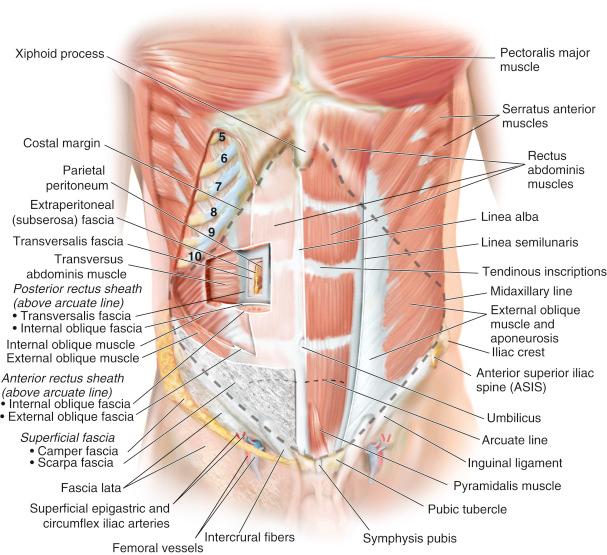
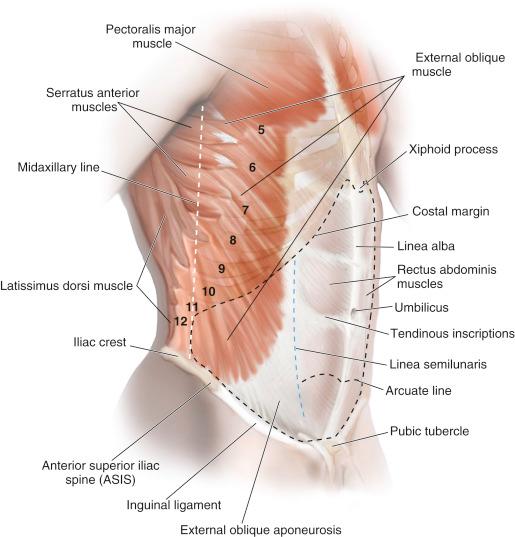
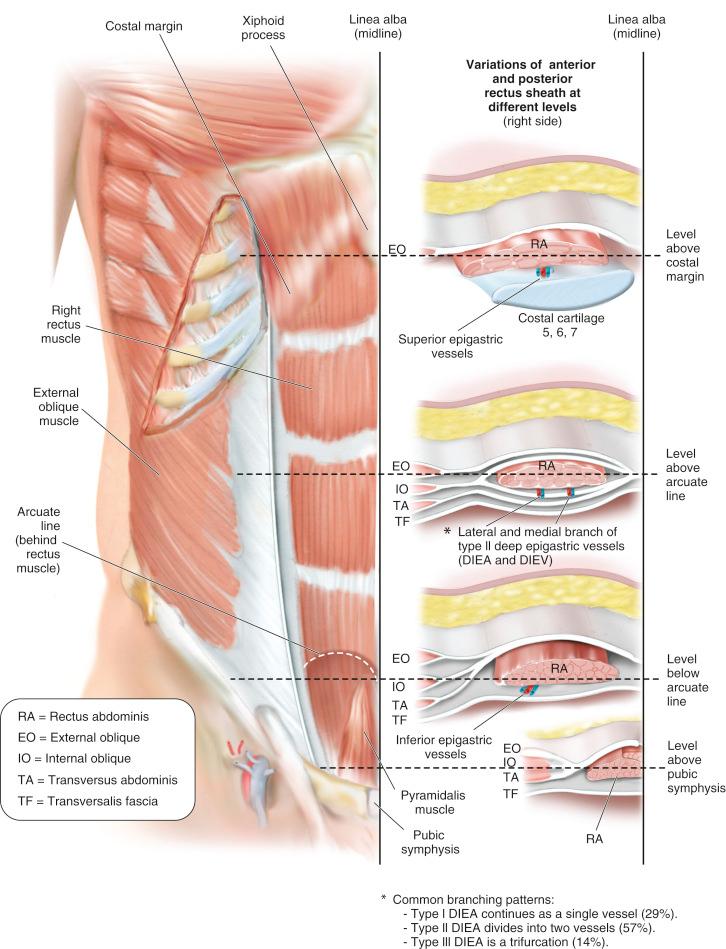
Layers of the anterior abdominal wall include skin, subcutaneous tissue, superficial fascia, deep fascia, muscle, extraperitoneal fascia, and peritoneum.
The superficial fascia of the abdominal wall consists of a single layer above the umbilicus, comprising the fused Camper and Scarpa fasciae.
Below the umbilicus, the superficial fascia consists of a fatty outer layer (Camper fascia) and a membranous inner layer (Scarpa fascia).
Camper fascia is continuous inferiorly with the superficial thigh fascia and extends inferiorly to the scrotum in males and labia majora in females.
Scarpa fascia fuses inferiorly with the fascia lata of the thigh and continues posteriorly to the perineum, where it is called Colles fascia.
Scarpa fascia is usually a visible and durable structure and is closed separately during various surgeries on the abdominal wall to achieve an optimal scar result.
The rectus sheath is found in the midline.
Laterally, layers of the abdominal wall deep to superficial fascia include external oblique, internal oblique, transversus abdominis, and parietal peritoneum.
The arcuate line (see Fig. 1.3 ) is located midway between the umbilicus and symphysis pubis and is a transition point where the posterior rectus sheath transitions from being the fusion of part of internal oblique fascia and transversalis fascia superiorly to only transversalis fascia inferiorly.
Above the arcuate line, the anterior rectus sheath consists of external oblique fascia and part of internal oblique fascia. The posterior rectus sheath consists of internal oblique fascia and transversalis fascia. The anterior and posterior layers of the rectus fascia invest the rectus abdominis muscles.
Below the arcuate line, the external oblique and internal oblique fasciae merge to form the anterior rectus sheath. The posterior rectus sheath consists of transversus abdominis fascia, making this only a thin layer with minimal strength.
The linea alba results from fusion of the anterior and posterior rectus sheaths and lies in the midline, extending cranially from the xiphoid process to the pubic symphysis caudally. Fig. 1.4 shows the anterior wall fascia after dissection of the abdominal wall skin and subcutaneous tissue, demonstrating the linea alba and linea semilunaris.
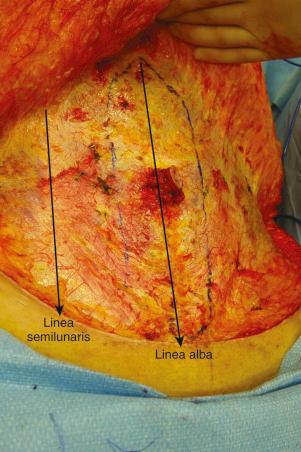
Incision, release, and dissection of the anterior external oblique fascia can be done for repair of ventral hernias; this is called the components separation technique ( Fig. 1.5 ). The incision in the external oblique fascia is made 1–2 cm lateral to the linea semilunaris, and the fascia is released to attain primary closure. Incisions also can be made in the posterior rectus sheath to gain additional length.
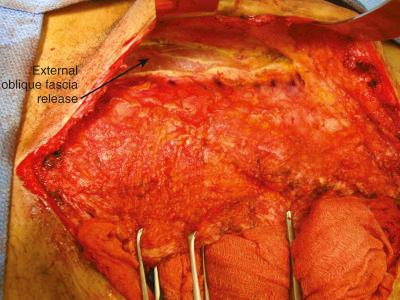
Become a Clinical Tree membership for Full access and enjoy Unlimited articles
If you are a member. Log in here